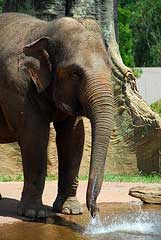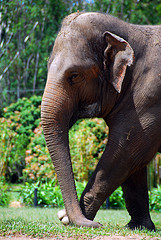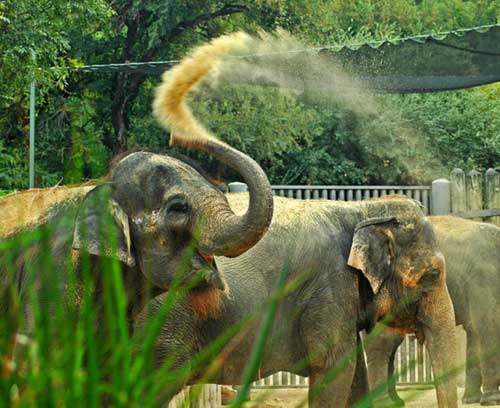Elephas maximus
How elephants adapt to their surroundings
Asian elephants have adapted many structural adaptations to help it survive in its natural habitat. Since they primarily inhabit tropical habitats and do not have any sweat glands, they have to find other ways to cool themselves off. They can flap their ears to create a cooling effect and stay comfortable in the heat. In addition, they can also spray water on themselves and roll in the mud.
Another adaptation that the Asian Elephants have developed is the proper distribution of weight while walking to equalize the pressure exerted by their massive bodies. Asian elephants walk on their tippy-toes and the soles of their feet are cushioned with a thick pad of fatty tissue which helps to distribute their weight so that they don’t put much pressure on their feet.
Also, since the neck of an elephant is too short to allow the mouth to reach the ground, they have developed a structure called a trunk which has many important functions. The upper lip and the nose have been elongated and muscles have been developed to form the trunk. The trunk is extremely sensitive with eight large muscles on each side. However, there are approximately 150,000 clusters of muscles running throughout the trunk. This extremely muscular structure functions in smelling, touching, and transferring food and water from the ground to the elephant’s mouth. It is also used to spray water and dust on the skin to help protect it from insects and sunburn. The trunk provides the elephant with a very keen sense of smell. In addition, the trunk picks up grasses and vegetation off of trees and brings it to the elephant’s mouth so that they can consume it.
Since Asian elephants are strictly herbivorous, they have also developed large molars in their mouths that are used primarily for chewing and grinding very fibrous plant materials like the cellulose that makes up plant cell walls.
Asian elephants also have very low-pitched sounds called infrasound, that help them to communicate with each other. These sounds are below the range that humans can hear. A keen sense of smell and good hearing makes up for their poor eyesight due to their small eyes.




